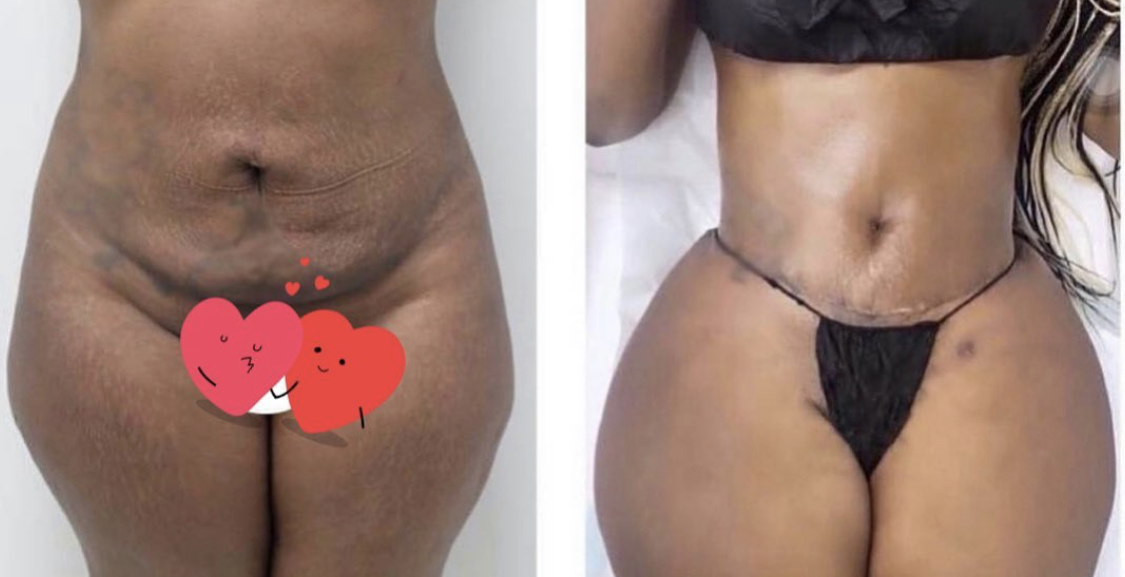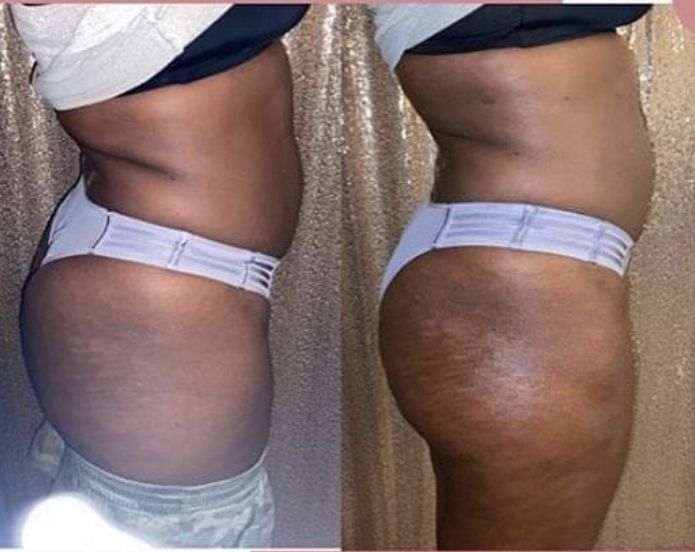Vacuum therapy (vacuum massage) is the effect on the skin and deep tissues with negative pressure of the order of 0.1-0.7 atm.
Vacuum massage action mechanism
Capillaries expand, blood flow increases, and metabolic processes in cells and tissues are activated in the zone of action of negative pressures. Skin mechano- and thermoreceptor irritation stimulates the neurohumoral system, increasing the intake of acetylcholine, histamine, prostaglandins, and other substances into the blood. There are “soft” hemorrhages in the skin at the transition from negative to normal pressure, which are additional sources of biological stimulation of T-lymphocyte synthesis, contributing to the restoration of skin immunity and the mediated activation of fibroblasts.
Vacuum therapy works on the principle of increasing blood flow and circulation in areas of local negative barometric pressure or decompression. This results in one-of-a-kind conditions in which trophic peripheral tissues and intracellular metabolism improve, toxins are activated, inflammation of damaged cells stops, and structural and functional recovery is accelerated.

Apparatuses, devices, and techniques for carrying out this type of therapy may vary depending on the specific technique and the purpose of the treatment procedure.
Vacuum therapy is indicated for a variety of reasons, including its stimulating effect on local metabolic processes, venous circulation, and lymphatic drainage.
Swelling of the lower extremities due to chronic venous insufficiency; lymph stasis in the vessels and lymphedema; occlusion of the arteries of the lower extremities due to atherosclerosis of the vessels; upper extremity angiotrophoneurosis – Raynaud’s disease; muscular atrophy / hypotrophy and spasms; vegetative vascular dystonia and neuroses;
There are two methods for vacuum massage.
The dotted technique To create tightness, a small hole in the middle of the cannula is closed with a finger, and the cannula is tightly pressed against the skin. The pressure ranges from 0.1 to 0.5 atm, depending on the skin area. The negative pressure lasts for 3-5 seconds. When the finger is removed from the hole, the pressure returns to normal. The cannula is moved to a new location next to the previous one, affecting the skin of the face along the massage lines, from the center of the face to the auricle, and from the superciliary arcs to the scalp. This avoids the upper and lower eyelid zones.
This avoids the upper and lower eyelid zones.
The sliding technique. It is most commonly used on the body to treat lipodystrophy (cellulite) and only in exceptional cases on the face. The skin is covered with cream or oil before the procedure begins. To guarantee a good slip. After applying negative pressure to the cannula, it slides through the skin from the center of the face to the auricle along the massage lines in the forehead region.
Also used for vacuum massage are cans made of plastic or silicone; in such a set for vacuum therapy, banks of various sizes can enter.
Aside from coughing respiratory diseases (except pulmonary tuberculosis), vacuum therapy with cans and canned massage are recommended for arthritis, fibromyalgia, leg edema, and cellulite.
Vacuum-gradient therapy is a variation of bank therapy that involves the installation of cans of varying diameters during a single session. The difference in the size of the skin area drawn into the cans and the pressure between them causes a gradient, or a transition from a smaller pressure decrease to a larger one. It is believed that this stimulates local blood flow in deeper subcutaneous layers.
Local blood flow is believed to be stimulated in deeper layers of subcutaneous tissue, increasing the effectiveness of vacuum massage procedures for obesity and lipodystrophy.
Magnetic-vacuum therapy is another type of therapeutic can massage that uses so-called acupuncture magnetic-vacuum cans (with a magnetic cone-shaped core inside) that, according to their Chinese manufacturers, affect the same reflex zones of the body as acupressure.

Vacuum therapy of wounds
Wounds typically heal by approximating the wound’s edges (for example, by stitching), and the process of regenerating the defect by granulation and restoring the intact epithelial barrier is quite complex and lengthy, frequently accompanied by infection and inflammation. Negative Pressure Wound Therapy (NPWT) or local therapy with negative pressure (TNP), as well as VAC (Vacuum Assisted Closure – auxiliary vacuum closure) make the healing process more dynamic. All because of increased blood flow to damaged tissues and a reduction in their puffiness.
The use of vacuum therapy in surgical practice and traumatology improves the healing of chronic and severe wounds with extensive and profound soft tissue damage, creating a moist environment.
Apparatus for vacuum therapy of wounds (Foryou STAN NPWT, PICO Single Use NPWT, VivanoTec, etc.) usually consists of an adjustable vacuum pump, special multilayer dressings, fixings for sealing the wound surface, drainage tubes, systems for connecting wound dressings to pump units, chamber (tank) for collection of waste liquids.
The use of vacuum therapy in surgical practice and traumatology improves the healing of chronic and severe wounds with extensive and profound soft tissue damage by creating a moist environment, removing discharge from the drainage, squeezing the wound edges, stimulating angiogenesis, and forming granulation tissue. Furthermore, because an open wound is transformed into a controlled closed wound, NPWT can provide infection protection.
The technique requires appropriate treatment of the wound surface and the application of the initial loose, and on top of the dense occlusive dressing (the type of dressing used depends on the type of wound and clinical goals). Then drain the system and seal the bandage. When the preparation is completed, the pump is connected to pump the air: it can be tuned to continuous or intermittent pressure with regulation of its level.
Vacuum-laser therapy
Vacuum laser lipolysis, also known as vacuum-laser therapy, is a non-invasive and painless alternative to traditional liposuction.
The vacuum therapy apparatus (or procedures) combines a suction device with rollers, a vacuum pump, and heat from a low-power laser.
Explain how a dual effect – vacuum and laser – aids in the movement of “warmed” triglycerides from adipocytes (adipose cells) to their outer membranes and into the intercellular space, from which everything is absorbed by the lymphatic system.
In this case, as claimed by the spa, the rollers pull out the fibrous tissue and even the dimples on the skin that are characteristic of lipodystrophy.
Interval Vacuum Therapy
Vacuum can be used continuously or intermittently, with the latter being interval vacuum therapy, which is used in the treatment of venous and arterial problems in the lower extremities, as well as during rehabilitation following sports injuries and vascular diseases.
Alternating pressure (normal and low) aids in lymph circulation and activation of blood flow at the periphery and in the muscles. The vacuum therapy apparatus consists of a cylindrical space in which the patient’s legs are placed; the internal space of the device is sealed in the waist region, and the vacuum pump alternately generates intermittent normal and low pressure.
The reverse flow of venous blood and lymph in the large vessels is facilitated during the normal pressure phase, and as a result, interval vacuum therapy provides deep lymphatic drainage.
Vacuum therapy for osteochondrosis
Preparation of the vacuum procedure for osteochondrosis consists in a light five-minute, slightly warming massage with essential oils. And then on both sides of the spine (with an indentation of 7-8 cm) banks are installed, and a specialist in canter massage is taken for work.
Care after the procedure is simple: you should take good care of yourself and rest, lying on your stomach, at least 40-45 minutes.
However, there are contraindications to vacuum therapy for osteochondrosis, and this is:
Treatment with local negative pressure – vacuum therapy with erectile dysfunction (ED) or fallodecompression – is used to stretch the cavernous (cavernous) bodies of the penis and increase the flow of blood to the penis.
Depending on the purpose, vacuum constrictor therapy can be used – a vacuum narrowing device (VCD or vacuum rectifier) by means of an external compression ring, which is installed at the base of the penis to prevent blood outflow, supporting an erection for sexual intercourse.
When the narrowing ring is not used, blood oxygenation in the male sexual organ is simply increased and cavernous fibrosis is reduced, and such vacuum therapy for men is part of the rehabilitation after radical prostatectomy, potentially increasing the chance of maintaining erectile function.
Specialists note that this treatment option often helps men with moderate ED. But even with proper preparation, 65% of patients stop using the device for VCD within two to three months.
Vacuum facial therapy
To date, vacuum facial therapy is limited to vacuum massage with a suction electric pump with nozzles.
At the same time, stories about the long lifting effect, the restoration of the young structure of the skin and the increase in collagen synthesis are somewhat exaggerated, since such a procedure has become standard in many salons … So read reviews about procedures and their effectiveness (99% fictitious for advertising purposes) A waste of time.
The only thing that is guaranteed to improve after a facial vacuum massage is the local circulation and lymphatic drainage; the rest depends on such factors as the state of the endocrine system and metabolism, the type of skin and daily care for it, as well as the “degree of its wear and tear”.
The technique is simple in execution, effective, but has a wide range of contraindications.
Vacuum therapy should not be given to patients with fever, acute infectious diseases or after a heart attack and stroke.
Do not apply hardware vacuum procedures for arterial hypertension of the third degree; Dermatological diseases of bacterial, fungal or viral origin; with a low level of platelets in the blood and its poor coagulability, as well as in the presence of thrombophlebitis or varicose veins on the legs (if the procedure affects the lower limbs).
This type of therapy is forbidden for pregnant women.
Contraindications to the treatment of wounds by a vacuum method are oncological diseases; purulent-necrotic processes in bone and soft tissues; presence of fistula; gaping of internal organs and large blood vessels in the wound cavity; septicemia.
Probably, the positive consequences after the procedure are more obvious (see the beginning of the material). Therefore, special attention should be paid to complications after the procedure.
So, vacuum therapy by banks is considered safe, only after removing the cans on the skin for a while there are characteristic round bruises. But this is normal and is not considered a complication. But when using glass jars by carelessness can get a skin burn. And in any case, there is no guarantee that there is no individual reaction, for example, in the form of point subcutaneous hemorrhage (petechia) or exacerbation of some chronic pathology.
Vacuum therapy of wounds can be accompanied by severe pain, especially when changing dressings, so in such cases the problem is solved by anesthetic drugs.
And vacuum therapy for men (more precisely, vacuum-constrictive) is fraught with significant subcutaneous hemorrhages in the penis, its paresthesia and extremely painful erection.
